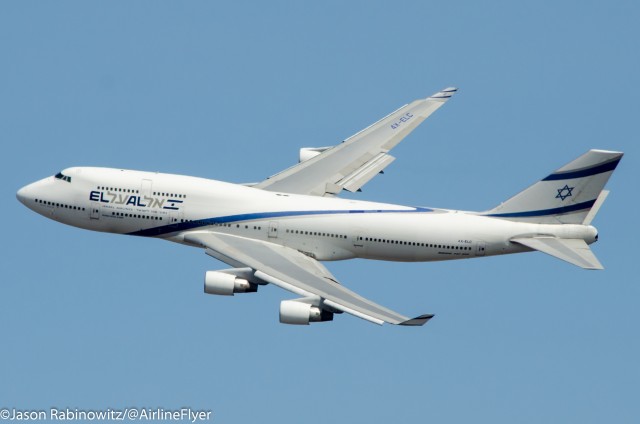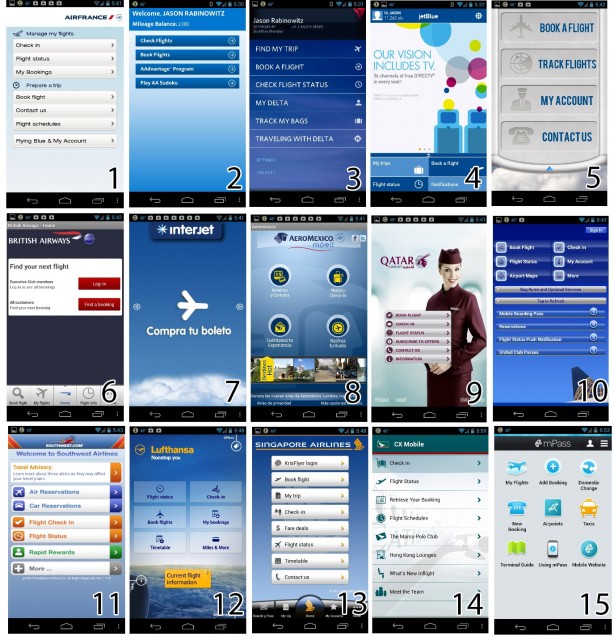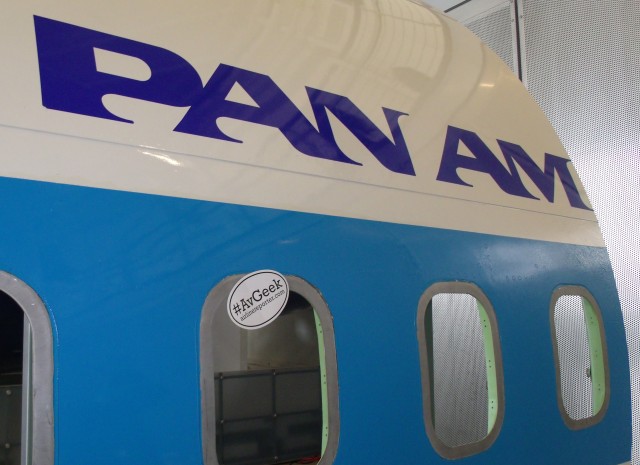This guest story written by Gideon Afek, who is a commercial pilot and aviation historian, with a background in project management and sales; Born in South Africa, Gideon immigrated to Israel from Australia in 1985.
As soon as the new “Open Skies” agreement between Israel and the EU was announced, the three Israeli airlines came out fighting, tooth and nail. In a rare display of solidarity, both senior management and unions have closed ranks in vocal opposition, and the doomsday weapon of a strike has been quickly and easily unsheathed.
The Israeli public watch in trepidation, anticipating not only short term disruptions of travel plans, but also hear the dire predictions of the demise of Israeli civil commercial aviation as we know it, from no less than the most senior leaders of the industry.
As it stands ’“ we all should be very concerned ’“ right?
A closer inspection of the facts is revealing, and conclusions do not necessarily align to the nightmare scenario being projected to us today by the Israeli Airline Industry. The Israeli airlines have not stated clearly to what exactly in the agreements they are opposed, or, to what changes they request. In effect, they would prefer the agreement to be cancelled outright. By doing so, they request that the reality be preserved. A protected reality that is almost unknown in modern commercial air travel.
They demand that their market share be coddled and shielded by government regulation, and not by way of the merits and advantages that they offer to the travelling public. They demand that their comfort zone be preserved, allowing them to continue on as before.
The fact is that without deep and perhaps revolutionary reform within the companies, they will indeed, not be able to survive the anticipated changes brought upon by the agreement.
El Al in particular, is a deeply conservative institution. Despite being privatized from 2003, the company still functions similar to a government company of 1970’s Israel, with the associated Histadrut trade union influence and characteristics. In particular, the company suffers from a bloated and inefficient labor force and management practices, similar to airlines such as Alitalia and Iberia.
The Minister of Transport, Mr Yisrael Katz published the following statistics: “El Al employs just over 6,000 workers for a fleet of 37 aircraft, while Air Berlin has a workforce of 9,000 and a fleet of 200 aircraft.”
The CEO of the company is almost always an ex-Air Force General, such as the current CEO, Eliezer Shkedi. The only exception in recent decades was Shkedi’s predecessor, Haim Romano, and even he grew from within the security establishment. These generals have no prior commercial management experience, so it may be assumed that the airline is managed with a heavy military style and influence. No CEO has actually grown and come up through the company ranks.
These facts provide only a backdrop to the company ills. El Al today functions under an archaic strategy, one that was commonplace in commercial aviation from the 1950’s and up to the 1980’s. In those days, national carriers transported passengers to and from the mother country. The entire market in which El Al competes, comprises of flights to and from Israel alone. El Al claims a market share of roughly 25-30% of this traffic.
For El Al to earn a profit on a given flight, it needs to fill over 80% of the seats (known as the load factor). Emirates Airlines of the UAE is profitable with a load factor around 70%, in comparison.
El Al tells us that they have unique constrictions, not suffered by their competitors, such as not flying on the Sabbath and footing a bill of 50% of the incurred security costs which are approximately $100 million a year (2011 revenues were $2.4 bn) and Arab countries that they cannot fly over.
Part of the solution is to compete in a market that is hundreds if not thousands of percent larger than that of flights to and from Israel. That means moving to a “Hub” model, whereby Tel Aviv becomes a transit point for the majority of customers, instead of a final destination.
El Al will sell tickets to people who seek to travel between Europe and the Far East, for example, a flight from London to Bangkok, or Paris to Beijing. Tel Aviv will be a stopover for two or three hours. Those who wish to rest, can stay for 24 or 48 hours to get a glimpse of the cultural, spiritual and historical fruits that this country has to offer the world.
Airlines around the world use this model. El Al does not. True to at least 2011, El Al would or could not sell one ticket with such a route at a remotely competitive price.
El Al, Arkia and Israir need not view each other as bitter competitors as is the case today. They may cooperate, selling joint tickets ’“ for example, Arkia will carry a passenger from Stuttgart to Tel Aviv, from where he/she will continue with El Al to Mumbai. In this way, fleets will, to an extent be pooled, and all three companies will benefit.
We can examine airlines in the region that have adopted this Hub model and are absolutely flourishing:
- Turkish Airlines has a fleet of 212 and 284 more aircraft on order or options.
- Ethiopian Airlines has a fleet of 59 with 35 new aircraft on order or options.
- Emirates has a fleet of 186 with 263 aircraft on order or options.
- Qatar Airways has a fleet of 122 with 208 aircraft on order or options.
Granted, the Gulf carriers enjoy cheap fuel at home, but that does not deny the merit of the same Hub strategy for El Al.
The size of El Al’s current market is limited ’“ there are only a given number of people flying to and from Israel. The answer is clearly to compete for a much larger market. Such a change would not only lead to company expansion, it would also allow El AL to fly seven days a week.
Israel is well placed geographically to function as a hub for flights between Africa, Europe and Asia, despite the Arab denial of overflying rights. What many don’t seem to grasp is that airlines in the world today don’t just sell a transport solution from point A to point B.
Airlines sell a travelling experience, involving state of the art In-Flight Entertainment Systems, comfortable seats and legroom, new aircraft, internet connectivity, good food, excellent cabin service as well as safety. El Al only really excels in the last and is notorious in the former. Vast improvements in all of these can be made, the solutions exist. Should all these parameters be met, with a reasonable price, passengers will want to fly with El Al, despite the addition of some three hours to the flight due to the unfriendly Saudis.
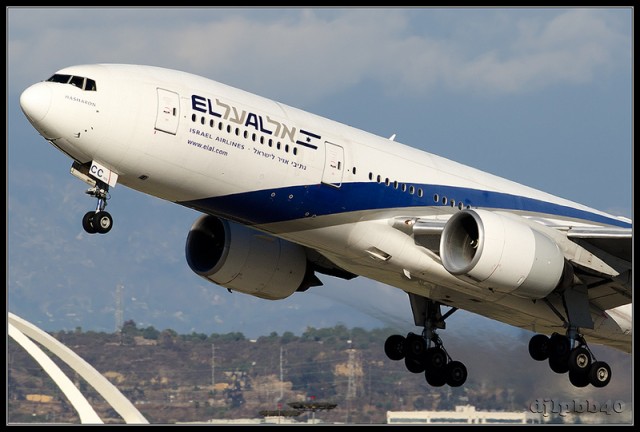
El Al Boeing 777-200. Photo by Daniel T Jones.
Let us make a cursory examination of El Al’s fleet: There are some 37 aircraft in service with 8 orders and options published. Over half of the aircraft are 15 years old or more. The fleet includes 13 aircraft that are considered highly fuel inefficient and expensive to run by today’s standards (767-300 and 747-400) and are being replaced by all El Al’s competitors who operate such aircraft.
Should El Al decide to order the new and desperately needed 787 (Or A350) tomorrow, it will take some five years to get the aircraft, as El Al hasn’t even yet joined the back of the queue. There is no published long term fleet renewal plan, and it is unclear by what process new aircraft are ordered.
For a modern airline to succeed in trading in its marketplace, it needs a seamless IT infrastructure through which various company departments can communicate with each other. Much trade goes on between different airlines, and El Al must be able to manage its reservations system while it can interface with the systems of other airlines as well.
A very large portion of tickets are sold via the internet through all sorts of websites, such as Edreams and Skyscanner, to mention a few, and these must be exploited by the company.
Professor Judy Gittel of Brandeis University made a study of the cultural and management organization of Southwest Airlines, based in Dallas, TX. This airline has been profitable for a remarkable straight 39 years in the super-tough US Airline market. Perhaps the central pillar of their success is the organizational culture and management style that places an emphasis on excellent relations between everyone from the CEO to the last person that cleans the aircraft.
Professor Gittel identified some twelve principles that comprise the success of the airline. It is the workers who to a very large extent bring profitability and efficiency to an organization, and such is the case at Southwest.
A study of this airline can only bring benefit to an airline like El Al who is managed by a mix of military and trade union type culture.
The airline has an inflated workforce that needs to be trimmed. This is always a sensitive, if not inflammable issue. European business jet airline Netjets, who operate over 1000 aircraft needed to reduce the workforce in 2009 and set about doing so without any involuntary layoffs.
Five different options were offered to the workforce, each one involving different formulas of extended leave without pay, job sharing, university studies and several other creative solutions. The common denominator between them was a win-win situation between company and employee. Netjets succeeded in the reduction of workers, and not one was fired.
Today the three Israeli airlines fear change and they fight to preserve their meat pot as it is. It is unfortunate that the management and unions are not more imaginative and creative.
As the clich goes ’“ “change brings opportunity”, and if done correctly, Israeli civil aviation may be at the threshold of a new golden age.
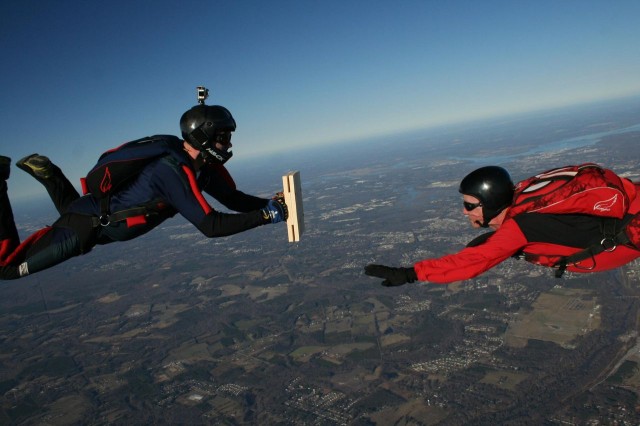
These were taken during his training exercises over Virginia which is where he is currently stationed. Photo from Ernie Torres.
The title of this story sounds like the lead in for a great joke, right? It’s not. Wait… what? This is an aviation site, why are we jumping out of perfectly good planes? Martial arts and power rangers? Yes, it’s a stretch, but hear me out. There’s aviation stuff below, I promise.
Not long ago I was approached by Ernie Torres, a Tang Soo Do Black Belt and AFF (advanced free fall) skydiving instructor who also happens to be a First Class Petty Officer in the US Navy. He came to me to share his ambition to shatter (pun intended) a skydiving world record which was set in January by Jason David Frank. You may remember Jason as the Green Power Ranger. According to Ernie:
“A new world record was set that combined the skills of skydiving and martial arts. This record involved breaking boards, which is normally performed during a martial arts demonstration… while skydiving. After seeing the attention it received, one thought came to mind; I can do better and use the publicity to raise awareness for the Wounded Warrior Project.“
Convinced he could further advance the world record given his unique skill set and background, Ernie approached the good folks over at SkyDive Arizona who agreed to donate the air time, the crew and all the skydiving talent that he would need to support him in his endeavor.
I reached out to Jocelyn Bernatchez, Marketing and Events Coordinator at SkyDive Arizona for details. The world record attempt will occur on Thursday, May 23 from their base in Eloy, AZ, which is roughly halfway between Phoenix and Tucson. Ernie will be joined by a crew consisting of some the most experienced skydivers in the US, likely including divers from Arizona Arsenal and Arizona Airspeed, the two premier Arizona skydiving clubs. According to Jocelyn:
“The aircraft will hold up to 23 licensed skydivers including Ernie. The climb to 13,000 feet typically takes 15-18 minutes. The skydivers will exit the plane with the pine boards and line up in free-fall. Ernie will come past each skydiver and attempt to break the pine board. He will continue until all the boards are broken or we reach break off altitude, when we separate to deploy our parachutes, usually around 4,000 feet.”
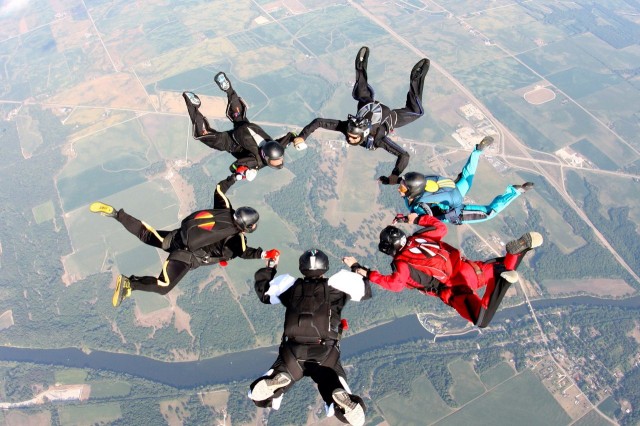
Ernie does his thing — falling on purpose.
The current record stands at just 7 boards, and the record before that was 5. So to make his mark on the record books all Ernie has to do is smash through 8 or more boards — in roughly a minute — while falling through the sky at terminal velocity, surrounded by his peers. What a rush!
I was hoping to give a bit more background on Ernie’s outstanding military service and his transition to soon becoming a veteran. Through my Navy contacts I was able confirm my assumptions. He’s indeed a decorated sailor with an exemplary service record. However, Ernie very carefully deflected all of my attempts to get this information directly from him. He always put the focus back on his cause: The Wounded Warriors, “Those that have sacrificed much more than I have. Those are the people that I am striving to support with this endeavor.”
The Wounded Warriors Project (WWP) is a tax-exempt 501(C)(3) nonprofit organization whose mission is to honor and empower wounded warriors. They receive a 4 star accountability & transparency rating from the third-party charity auditing firm Charity Navigator. The WWP provides services and programs to meet the needs of injured service members. A worthy cause, right? Let’s dig deep and support Ernie in his endeavor. All funds go directly to the WWP. No third parties, no gimmicks. Just helping our wounded servicemen and women.
So there you have it. A selfless serviceman seeks to claim a world record in honor and support of his fellow warriors. We wish Ernie the best of luck and anxiously await the record transitioning to a true hero and away from an actor who once played one on TV.
You can follow Ernie’s progress on YouTube, Facebook, Twitter and of course I will cover the jump here.
Oh right, I promised aviation stuff so for those of you who stuck around, here it is. I asked Jocelyn about SkyDive Arizona’s fleet. She stated, “We have a fleet consisting of four Shorts Skyvans, five Twin Otters, a DC3 and a Pilatus Porter.”
While it’s not yet decided which perfectly good plane Ernie and team will be jumping out of, I know I have my fingers crossed for the old reliable N86584, a 1942 DC-3. How about you?
 |
JL Johnson, Correspondent. JL is a twenty-something Sr. Business Analyst, semi-frequent traveler and lover of all things aviation. He’s based in Lee’s Summit, MO and attributes his love of aviation to his grandfather, a USAF Colonel who had him in “avgeek training” before he could walk. @User47 | AviationGeek.net | YouTube | Flickr | Instagram |
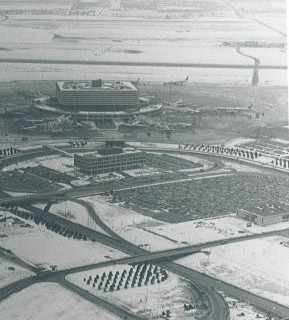
Terminal 1 at YYZ on a snowy winter day in the early 1970s. I’m really glad I only worked there in the summer! Photo: Toronto Pearson International Airport
I was in my late teens in the early 1970s. For two summers, I had the absolutely perfect job that any young AvGeek would ever want ’“ working on the ramp at a major airport. Yes, I’m proud to say that I was a ’œRamp Rat’!
My summer job was at Toronto International Airport (YYZ), then also known as Malton Airport. I worked in Terminal 1, the uniquely-designed round-concourse ’œAeroquay’. It’s long gone, having been demolished and replaced by YYZ’s new T1.
I was part of a crew of four; my boss, called the ’œlead hand’, and two other guys. No girls allowed in that club back then! We did everything, including baggage and cargo offloads and onloads, and cabin cleaning. I’d normally work the 2 pm to 10 pm or the 4 pm to Midnight shift, when the main international ’œpush’ happened at YYZ.
It was a transition period for the international carriers. Most still flew the early-generation 4-engine jets, like the 707, DC-8, and the beautiful but incredibly loud Vickers VC-10. The wide-bodies were just coming into the fleets, with early 747s, DC-10s, and L-1011s.
Short- to medium-haul flights were handled by DC-9s, BAC-111s, 727s, and a few 737s. The 737 wasn’t particularly popular with the airlines back then ’“ how times have changed. We worked turboprops, like the Convair CV-580 and Lockheed Electra. Any Airbus planes? Didn’t see any, because the A300 didn’t go into service with Eastern Air Lines until the late ’70s.
And just like any job, stuff happens. But for AvGeeks like me, there are many things I’ve remembered, all these years later:
- When the later-evening Eastern Air Lines 727s arrived, our crew would rush to do the offload. Then we’d head to the cabin and grab a first-class dinner tray before the catering trucks came to empty the galley. Filet mignon ’“ yum.
- While cleaning the cabin of a BOAC 707, a summer thunderstorm rolled over the airport. The winds were so strong that they actually pushed our chocked plane about six feet. There was a catering truck up on its lift on a 747 at the next gate ’“ I thought it was going to tip over.
- Late on a pea-soup foggy evening, appreciating the surreal experience of driving around the ramp, oh so very carefully, as the wingtips lights of each plane loomed out of the fog.
- Feeling a bit sorry for a co-worker, on the same foggy night. He was driving a van, and didn’t go the right way around the left wing of an American Airlines 727. He wiped out the left aileron. The plane was grounded for repairs for over a week. My co-worker’s career at the airport was permanently grounded.
- Almost suffering the same fate, when I positioned a baggage tractor for an arriving BOAC 747. I confirmed with my lead to make sure it was in a safe parking spot, and then went up to put the Jetway on the arriving plane. The 747’s nose appeared and stopped, then the engines spooled up and the door came into position. I put the Jetway in place, then went back down to the ramp to find that the steering wheel of the tractor had been crushed by the inboard left engine cowling. The damage on the cowling was a small, 1 inch scratch. Many pictures, inspections and discussions ensued. The plane was cleared, though, and left on time. My lead and I were in ’œbig potty’, but kept our jobs. Luckily the steering wheel didn’t end up in that engine! And that 747’s registration ’“ G-AWNL ’“ I’ve never forgotten.
- Ick ’“ cleaning the washrooms on charters coming from Europe. Double-ick ’“ those were the days before smoking was banned, so the armrest ashtrays had to be cleaned out, too.
- Working an Alitalia 747 that happened to be the flight that my parents were taking to Rome, and on to Tel Aviv. Much waving from their seats. Because of the connection and security issues at the time, their bags weren’t in containers, but had to be put in the ’œfree load’ hold just below the tail. Who was in the hold, and put their bag gently in place? Me! Who didn’t notice that the cart with their other bag ended up back in the baggage room? Ummm’¦me. And who got the 3:00 AM call from Rome, from my very p/o’d Dad? That would be’¦me again.
- My favorite shift was being assigned to the refueling crew. All of the ground equipment had to be refueled, every day. Our lead had a van to drive us around, our crew all had clipboards with a list of the equipment, and we drove the tractors, belt loaders and even the aircraft tugs back and forth to the gas pumps. I’d try to grab one of the baggage container-loaders because they went really slow. I’d enjoy a beautiful summer evening on the ramp during the 20 minute drive to the pumps. And back.
- If I was working on a cabin, I’d try to do the clean of the forward part of the plane. That included the forward part of the economy cabin, the first-class cabin, galley and washroom, and’¦the flight deck. I think I spent way too much time just sitting in the left seat. It took quite a while to empty the waste bins, you know. Except one day on a JAT Yugoslav 707, when the very imposing stewardess-in-charge told me ’œYou don’t clean, I clean! Go!’ (Yes, they were stewardesses then)
- On those hot, humid, Toronto summer evenings, watching the 707s and DC-8s use just about every foot of the longest runway on takeoff. There was a hump about halfway along Runway 32, and the planes would pretty well disappear from view before they fought their way into the air, spewing black smoke from their max-power engines.
Do you think I had fun? You bet! And I’m sure that there are other current or ex-Ramp Rats out there that have other stories. Want to share? Please do so in the comments.
UPDATE: Our friends at Air Canada just sent me 5 fabulous archive photos. Have a look:
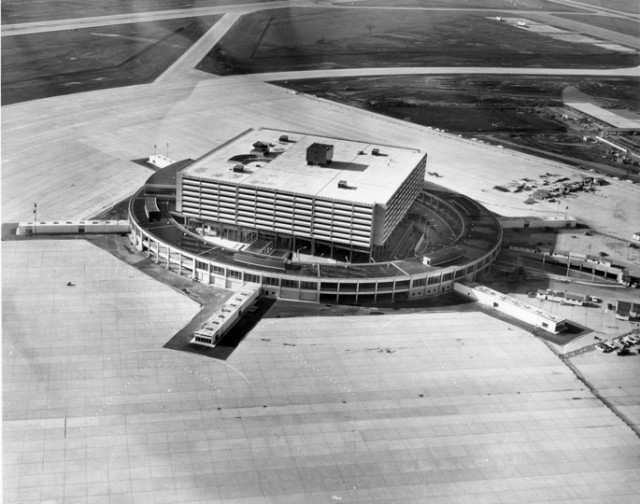
YYZ Aeroquay Terminal 1 before it opened in Feb 1964
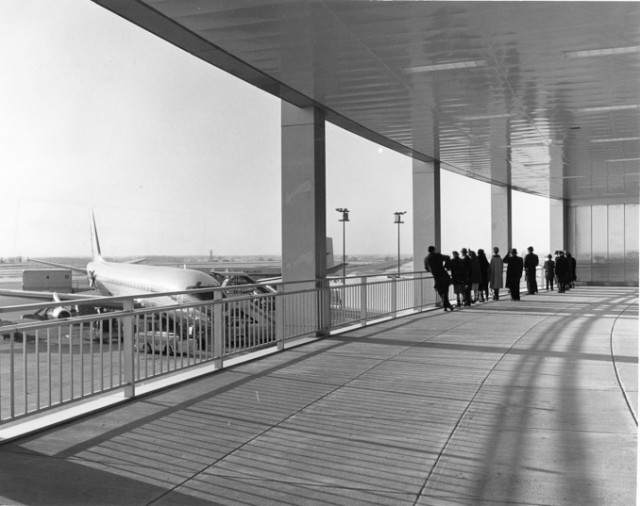
Aeroquay Observation Deck – yes, you could go outside and watch the planes!
The DC-8 is in Trans-Canada Air Lines (TCA) livery, pre-Air Canada.
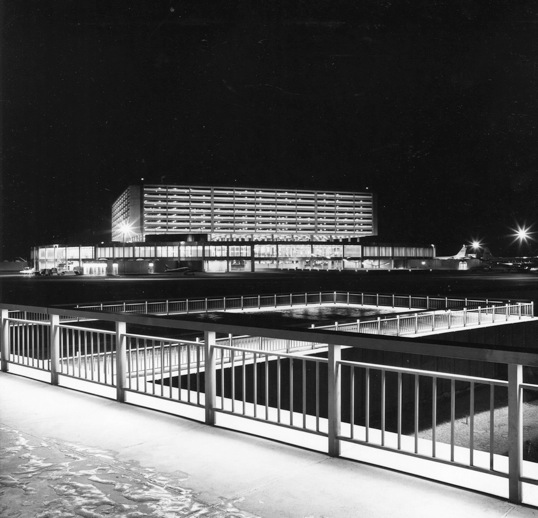
The new YYZ Terminal 1 at night in 1964
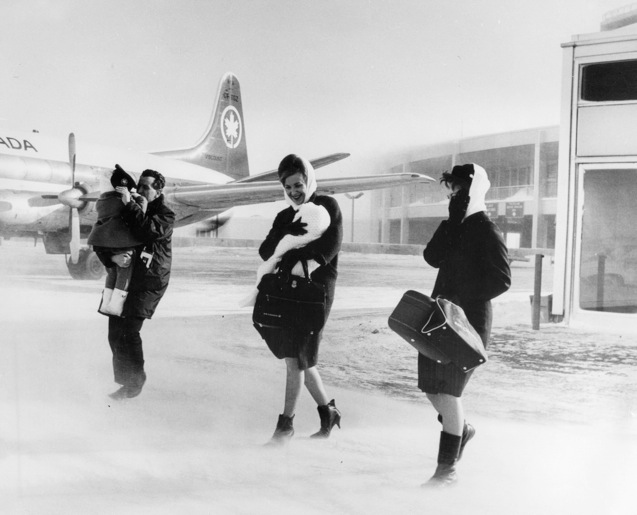
A cold winter day, before Jetways. That’s a Vickers Viscount in the background.
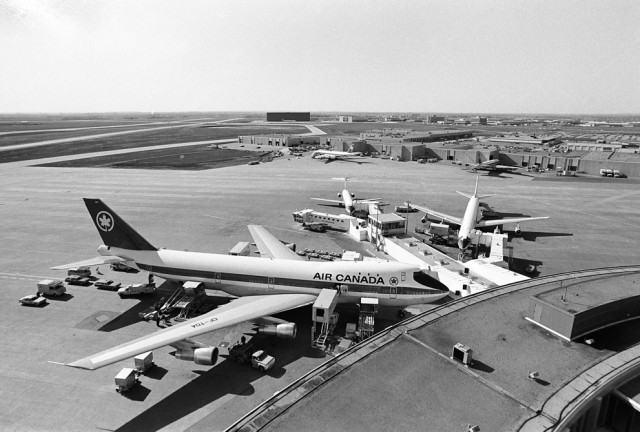
Air Canada’s first 747-100, CF-TOA, along with a DC-9 and “stretch” DC-8, likely between 1971 and 1974.
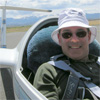 |
This story written by… Howard Slutsken, Correspondent.Howard has been an AvGeek since he was a kid, watching TCA Super Connies, Viscounts and early jets at Montreal’s Dorval Airport. He’s a pilot, and gets away to fly gliders whenever he can. Howard is based in Vancouver, BC.
@HowardSlutsken | www.wingborn.ca |
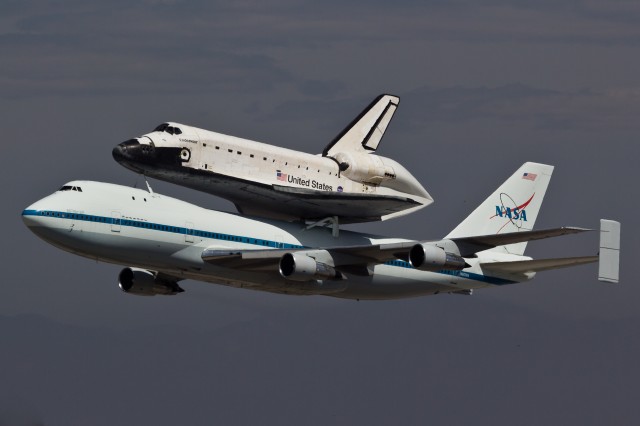
The Shuttle Endeavour rides to Los Angeles about a specially modified NASA 747 – Photo: Kevin Epstein – Aviation Photographic
When the final shuttle mission was flown by Atlantis, on July 8th 2011, the end of the NASA space shuttle program loomed. What would become of the magnificent aircraft (well spacecraft)?
Unfortunately the Museum of Flight in Seattle (where I am based) was unable to secure a shuttle, they did however get the Shuttle Trainer. The trainer was delivered with some spectacle, as the Super Guppy brought in the major pieces over 3 flights. With the Smithsonian’s Udvar Hazy Center getting a shuttle (Discovery), the Kennedy Space Center getting another (Atlantis), the final one, Endeavour, went to the California Science Center.
BONUS: Super Guppy Delivers Space Shuttle Trainer to the Museum of Flight in Seattle, WA
With the expected crowds wanted to see the shuttle, it was ferried across the country to LAX on what felt like the world’s largest flightseeing aircraft — a specially modified 747 — called the Shuttle Carrier Aircraft. From this point the final mission for the Endeavour was ahead of it, but also a world’s first. A 12 mile journey across Los Angeles streets to its new (and temporary) home at the California Science Center.
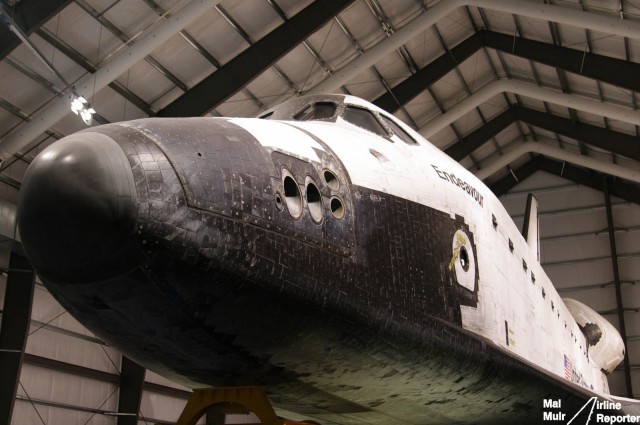
The Shuttle Endeavour: Photo – Mal Muir | AirlineReporter.com
The science center is located at Exposition Park, which is home to the University of Southern California, a handful of other museums and also the LA Coliseum, where the 1984 olympics were held. This makes it an ideal location to handle the crowds, as there is plenty of space (and there sure was a lot of crowds the day I visited). The museum has the usual science center exhibits but the drawcard (at least for many folks) is the Endeavour, which currently lives in a temporary exhibit.
BONUS: Video of NASA’s Boeing 747-123 (N905NA) Last Take Off as a Shuttle Carrier
The spacecraft is in pristine condition though as it still shows the battle scars (pointed out by my guide Shell Amega) from its last mission into space. I would not have even realized these deep scars had they not been pointed out to me and it was these scars that had Cmdr Mark Kelly, who commanded STS-134, to make a go/no go decision. His choice was to either conduct a dangerous spacewalk to fix the damage or reenter the atmosphere with the damage as is. Cmdr Kelly made the decision to reenter as is, and they all made it back safely, finishing their final mission.
But the displays don’t just end at the shuttle itself. There are also a number of exhibits dedicated to the shuttle program including a genuine ’œSpace Potty’ where crew used the facilities in spaceflight (including the curtain installed just for when females first joined the shuttle program). There is the Rocketdyne Operations Support Center taken piece by piece exactly from the day of the last shuttle mission and put back together at the Science Center, including down to the position of mugs, pencils etc.
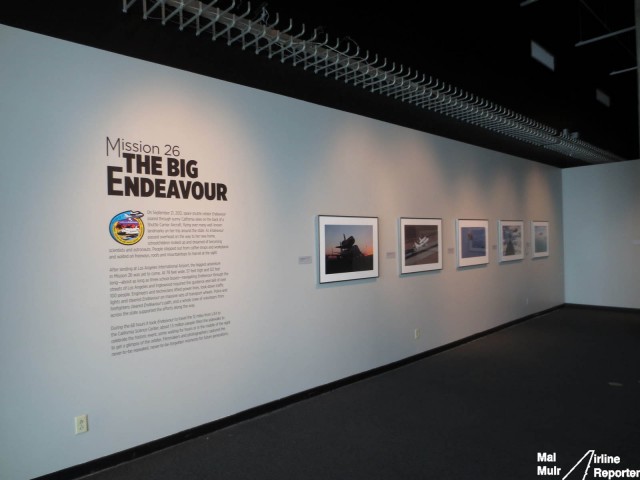
Misson 26 is a fantastic exhibition showing the people and places the shuttle went through on its journey across Los Angeles: Photo – Mal Muir | AirlineReporter.com
The one exhibit that really attracted me though was not the galley or the laboratory where the experiments were conducted in the cargo bay. It was ’œMission 26,’ which is a display of photographs used to chronicle the final mission for Endeavor and its journey through the streets of Los Angeles. This was a precision operation with laser measuring used to ensure that the shuttle did not damage things and any tree removed was later replanted (and they have been, with more to come).
Mission 26 though is full of the most stunning of photographs and video showing this journey through the streets. Not just of the shuttle itself but of the people, those who ventured out to welcome Endeavour to its new home.
BONUS: Video of Space Shuttle Discovery Launch Viewed From Airliner
Currently the California Science Center is building a true Air and Space wing to house the shuttle. NASA was a little bit puzzled and really worried that the plans were a bit out of left field as the shuttle will return to an upright position. Just as though it was sitting on the famous launch pad 39A at the Kennedy Space Center in Florida. It will sit surrounded not only by other spacecraft, satellites and displays but other aircraft as well. Once completed in 2017, it should make this a fantastic addition to aviation and space in Southern California.
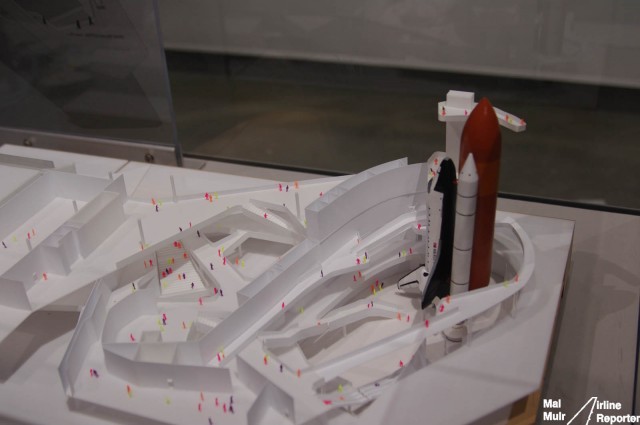
The New Planned Air & Space Gallery at the California Science Center: Photo – Mal Muir | AirlineReporter.com
A visit to the California Science Center and the Shuttle Endeavour are free, but booking them online before you arrive (and thus a $2 fee) is the best avenue. Access to the shuttle is limited and the day I was there (in the middle of spring break mind you) tickets sold out early! It is still worth it though, the shuttle was a magnificent icon of just what we can achieve when we set our mind to it & it will hopefully continue to inspire people in our future.
 |
This story written by…Malcolm Muir, Lead Correspondent. Mal is an Australian Avgeek now living and working in Seattle. With a passion for aircraft photography, traveling and the fun that combining the two can bring. Insights into the aviation world with a bit of a perspective thanks to working in the travel industry.
@BigMalX | BigMal’s World | Photos |
